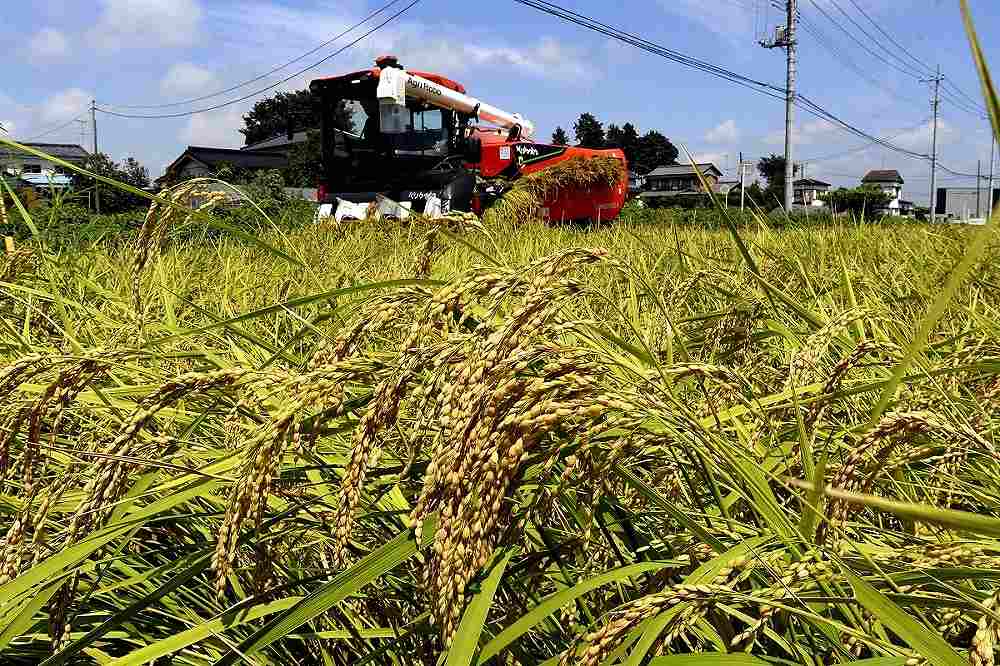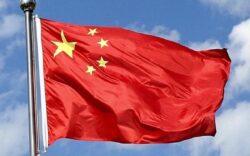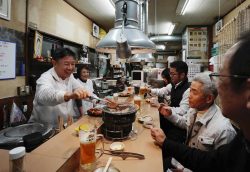Japan’s Rice Exports Hit Record High of 24,469 Tons in Jan.-July Period; Agriculture Minister Emphasizes Domestic Rice Inventory will Improve

A farmer harvests rice in Kazo, Saitama Prefecture, on Aug. 21.
14:40 JST, September 4, 2024
Japan’s rice export volume from January to July hit a record high 24,469 tons, increasing 23% from the same period last year, the Agriculture, Forestry and Fisheries Ministry announced Tuesday.
Though the private sector’s rice inventory has fallen to its lowest since 1999, rice meant for export cannot be used in the domestic market since government subsidies are tied to its production.
The largest importer of rice was Hong Kong, who received 7,163 tons. The United States came in second with 4,638 tons, followed by Singapore at 3,554 tons.
The total export value also hit its highest at ¥6.4 billion, up 29%.
The government regards rice as one of its key products for export. The annual export volume in 2023 was 37,186 tons, increasing about 12-fold from a decade ago.
Domestic demand for rice is on the decline. Thus, the ministry has capped rice production volume even after it discontinued a policy in 2018 that made farmers decrease rice production.
On the other hand, the ministry has encouraged rice farmers to grow rice for export by paying subsidies. The subsidies are up to ¥40,000 per 1,000 square meters of rice paddy.
The use of rice grown using the subsidies is fixed, so if the rice is used for the domestic market, the farmers are required to return the money.
Agriculture, Forestry and Fisheries Minister Tetsushi Sakamoto emphasized at a press conference after Tuesday’s Cabinet meeting that the private sector’s rice inventory as of the end of June was 1.56 million tons, which is much larger than the annual export volume last year.
“The short supply of rice [in the domestic market] will gradually be alleviated,” he said.
"Business" POPULAR ARTICLE
-

Japan Govt Adopts Measures to Curb Mega Solar Power Plant Projects Amid Environmental Concerns
-

Core Inflation in Tokyo Slows in December but Stays above BOJ Target
-

Major Japan Firms’ Average Winter Bonus Tops ¥1 Mil.
-

Institute: 2026 Condo Supply in Tokyo Metropolitan Area Forecast to Increase by 2.2%
-

Mcdonald’s, Starbucks in Japan Move Away from Paper Straws Amid Customer Dissatisfaction
JN ACCESS RANKING
-

Japan Govt Adopts Measures to Curb Mega Solar Power Plant Projects Amid Environmental Concerns
-

Core Inflation in Tokyo Slows in December but Stays above BOJ Target
-

Major Japan Firms’ Average Winter Bonus Tops ¥1 Mil.
-

Tokyo Zoo Wolf Believed to Have Used Vegetation Growing on Wall to Climb, Escape; Animal Living Happily after Recapture
-

JAL, ANA Cancel Flights During 3-day Holiday Weekend due to Blizzard


























